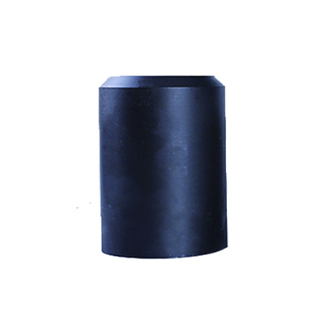- Afrikaans
- Albanian
- Amharic
- Arabic
- Armenian
- Azerbaijani
- Basque
- Belarusian
- Bengali
- Bosnian
- Bulgarian
- Catalan
- Cebuano
- Corsican
- Croatian
- Czech
- Danish
- Dutch
- English
- Esperanto
- Estonian
- Finnish
- French
- Frisian
- Galician
- Georgian
- German
- Greek
- Gujarati
- Haitian Creole
- hausa
- hawaiian
- Hebrew
- Hindi
- Miao
- Hungarian
- Icelandic
- igbo
- Indonesian
- irish
- Italian
- Japanese
- Javanese
- Kannada
- kazakh
- Khmer
- Rwandese
- Korean
- Kurdish
- Kyrgyz
- Lao
- Latin
- Latvian
- Lithuanian
- Luxembourgish
- Macedonian
- Malgashi
- Malay
- Malayalam
- Maltese
- Maori
- Marathi
- Mongolian
- Myanmar
- Nepali
- Norwegian
- Norwegian
- Occitan
- Pashto
- Persian
- Polish
- Portuguese
- Punjabi
- Romanian
- Russian
- Samoan
- Scottish Gaelic
- Serbian
- Sesotho
- Shona
- Sindhi
- Sinhala
- Slovak
- Slovenian
- Somali
- Spanish
- Sundanese
- Swahili
- Swedish
- Tagalog
- Tajik
- Tamil
- Tatar
- Telugu
- Thai
- Turkish
- Turkmen
- Ukrainian
- Urdu
- Uighur
- Uzbek
- Vietnamese
- Welsh
- Bantu
- Yiddish
- Yoruba
- Zulu
Exploring the Benefits and Applications of Steel Couplings in Modern Engineering
Understanding Steel Couplings Essential Components in Engineering
Steel couplings are critical components in various engineering and industrial applications. Their primary function is to connect two shafts, allowing for the transfer of torque and rotational energy while accommodating misalignments between the coupled shafts. This article will delve into the significance of steel couplings, their types, applications, and benefits.
Types of Steel Couplings
There are several types of steel couplings, each designed to meet specific requirements. The most common types include
1. Rigid Couplings These couplings are used when precise alignment is crucial. They consist of a single piece of metal that joins two shafts tightly, ensuring no relative motion occurs between them. Rigid couplings are suitable for applications where both shafts are aligned perfectly.
2. Flexible Couplings Unlike rigid couplings, flexible couplings can accommodate some misalignment between the shafts. They are designed to absorb shocks and vibrations, making them ideal for applications involving dynamic loading, such as motors and pumps. Common flexible coupling types include bellows, tire-style, and jaw couplings.
3. Oldham Couplings These couplings consist of three pieces – two outer hubs and a central sliding block. They are particularly useful for applications requiring axial movement and angular misalignment compensation. Oldham couplings are often found in robotic arms and conveyor systems.
4. Universal Couplings (Universal Joints) These couplings allow for the connection of shafts that are not perfectly aligned. They enable the transfer of rotational motion at various angles, making them essential in applications like automotive drivetrains.
steel coupling

Applications of Steel Couplings
Steel couplings find applications across diverse industries, including manufacturing, automotive, aerospace, and energy. In manufacturing, they are essential in driving machinery like conveyors and mixers. In the automotive industry, they connect the engine to the transmission, playing a crucial role in vehicle performance. In aerospace, steel couplings are used in various systems to ensure reliability and safety.
Moreover, in the energy sector, particularly in oil and gas applications, steel couplings are utilized in drilling rigs and pumping stations to connect pumps and motors. Their ability to handle high torque and compressive loads makes them invaluable in these high-stress environments.
Benefits of Steel Couplings
Choosing steel couplings offers numerous advantages. Firstly, steel has excellent strength and durability, making these couplings suitable for demanding applications where other materials might fail. Secondly, steel couplings have a high tolerance for temperature and pressure variations, ensuring consistent performance.
Additionally, steel couplings require minimal maintenance, which reduces operational downtime in industrial settings. Their robust design can withstand harsh conditions, such as exposure to chemicals and extreme temperatures, ensuring longevity and reliability.
Conclusion
In summary, steel couplings are indispensable in connecting shafts across various engineering applications. Understanding their different types and applications can help engineers select the right coupling for specific tasks, ensuring the efficiency and effectiveness of mechanical systems. As industries continue to evolve, the demand for reliable and efficient couplings will only grow, solidifying the importance of steel couplings in engineering designs. Whether for manufacturing, automotive, or energy applications, steel couplings play a critical role in ensuring operational success and safety.
-
Tubing Pup Joints: Essential Components for Oil and Gas OperationsNewsJul.10,2025
-
Pup Joints: Essential Components for Reliable Drilling OperationsNewsJul.10,2025
-
Pipe Couplings: Connecting Your World EfficientlyNewsJul.10,2025
-
Mastering Oilfield Operations with Quality Tubing and CasingNewsJul.10,2025
-
High-Quality Casing Couplings for Every NeedNewsJul.10,2025
-
Boost Your Drilling Efficiency with Premium Crossover Tools & Seating NipplesNewsJul.10,2025







